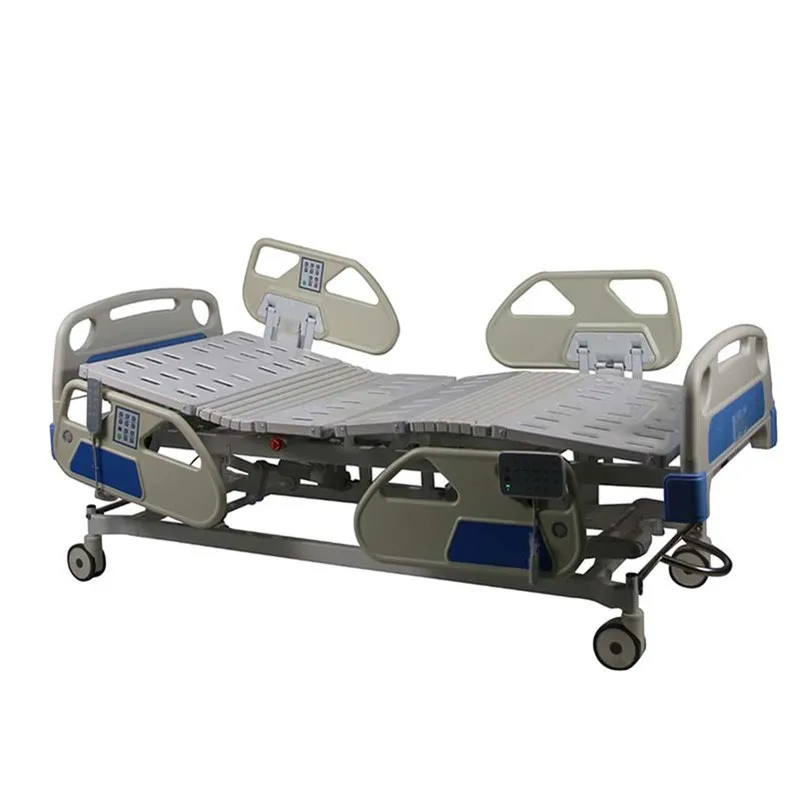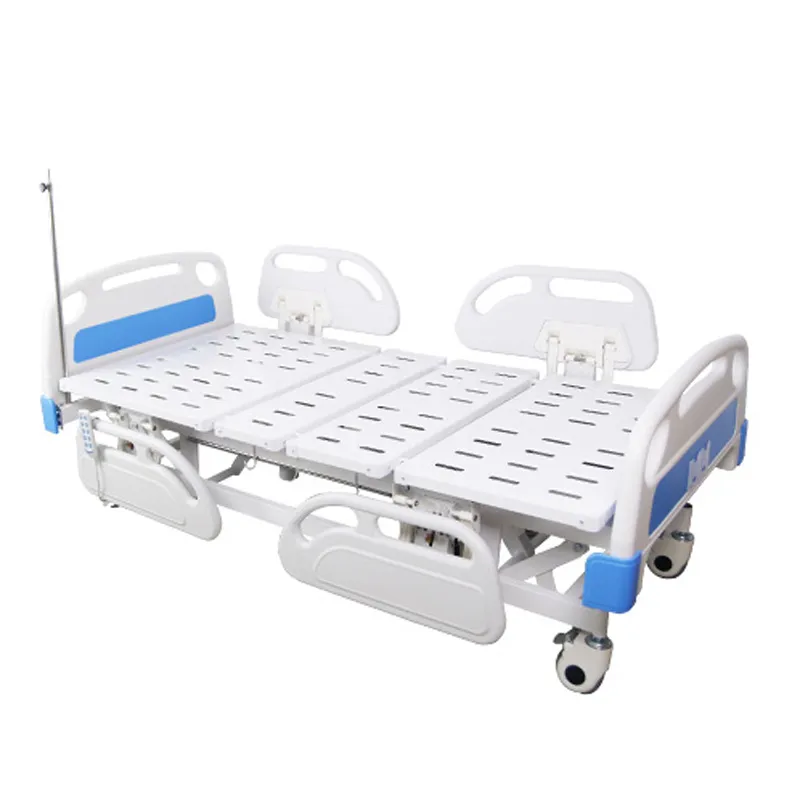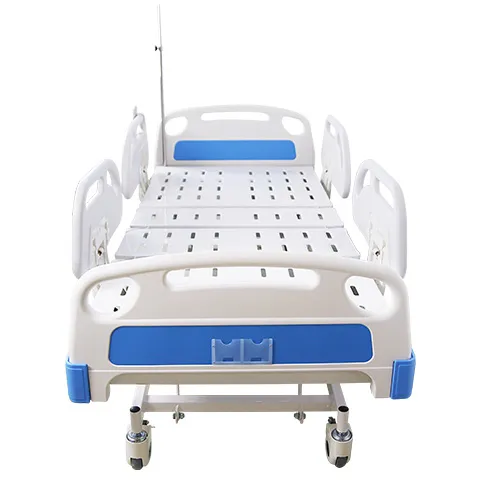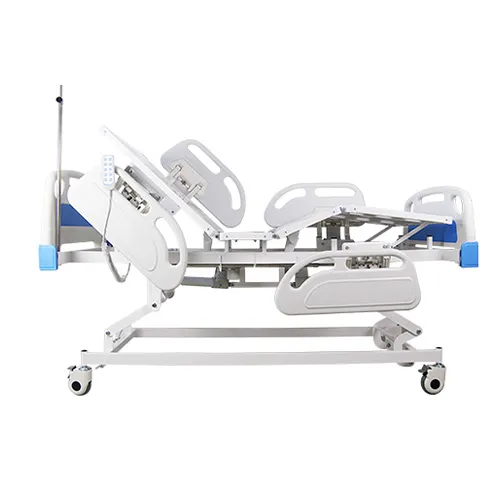In hospitals, rehabilitation facilities, and home care settings, electric hospital beds are core nursing equipment. Their size and weight capacity are directly related to nursing safety, patient comfort, and facility configuration.
We recently reviewed industry standards, international specifications, and technical data from major manufacturers. This article provides professional and detailed answers to the questions "What are the dimensions and weight capacity of an electric hospital bed?" and offers practical advice on selection, configuration, and safe use for medical institutions, purchasing decision-makers, and family caregivers.

What is an "electric hospital bed"?
Why are size and weight capacity important?
An electric hospital bed is a nursing bed with an electric drive that uses motors or linear actuators to adjust the bed height, head/foot angle, and other body positions to facilitate nursing activities such as turning, feeding, respiratory management, and transfers. The size of an electric hospital bed affects patient room space, mattress compatibility, sheet and duvet purchase, and door/elevator accessibility. The weight capacity (usually expressed as "maximum patient weight" or "safe working load") determines whether the bed can safely support the patient's weight, mattress, and accessory loads. Overloading can pose structural damage and safety risks.
What are the common dimensions of electric hospital beds?
1. Standard Adult Electric Hospital Bed Dimensions
• Bed Length (Total Length, Including Head and Foot): 80 inches (approximately 203 cm) is the standard. The most common size in the United States is 80" x 36" (approximately 203 x 91 cm). Bed lengths of 200–214 cm are also common in hospitals and homes.
• Bed Width (Bed Deck Width): The standard bed width is typically 36 inches (approximately 91 cm). For comfort or specific medical needs, bed widths of 90–100 cm are common, and even wider, extra-wide/bariatric models can reach 107 cm or more.
• Bed Height (Adjustable Range): Electric hospital beds typically have a wide range of adjustable heights to facilitate different operating procedures for caregivers. Typical heights range from approximately 35–45 cm at the lowest to 65–80 cm at the highest (this varies slightly between models). For example, well-known manufacturers typically provide a height range of 450–780 mm (45–78 cm).
2. Sectional and Tilt Parameters
Electric hospital beds typically have three or four sections (back, trunk, and leg sections, or additional foot sections). Key parameters include:
• Backrest: Typically 0°–60°, supporting semi-sitting to sitting positions; some emergency beds support higher angles.
• Leg/Knee Lift: Commonly 0°–30° or 0°–45°, this helps elevate the lower limbs and improve venous return.
• Trendelenburg/Reverse Trendelenburg: Some clinical beds support a ±10°–15° tilt for specific clinical positions.
3. Bedrail and Gap Safety Design
IEC and other standards have clear requirements for bedrail height and gaps (for example, bedside guardrails should extend a certain height above the upper edge of the mattress support platform to reduce the risk of entrapment and falls). Therefore, it is crucial that the bed and mattress are compatible. When purchasing, be sure to ensure that the "effective protective height" and "gap dimensions" of the combined bedrail and mattress meet the standards.

Compatible Dimensions of Electric Hospital Beds, Mattresses, and Sheets
The sectional and adjustable motion of electric hospital beds place special requirements on mattresses. Common mattress sizes and recommendations are as follows:
• Standard Compatible Dimensions: Common mattress sizes such as 90 × 188 cm, 90 × 200 cm, and 105 × 200 cm are commonly used in electric hospital beds. However, the actual deck dimensions and bedside guardrail gaps must be compatible with the mattress thickness to prevent slippage or entrapment during sectionalization.
• Air Pressure/Relief Mattress Compatibility: Dynamic air pressure mattresses used for pressure ulcer prevention must be compatible with sectional motion (to prevent airbag displacement or pressure on the joints). When purchasing, confirm the compatible model with the bed/mattress supplier.
When planning warehousing and accessory purchases, hospitals should consider the electric hospital bed's "deck size + mattress thickness + sheet and quilt cover dimensions" to avoid inconsistencies that could impact nursing operations and safety.
What is the load capacity of an electric hospital bed?
Several terms are commonly used regarding the load capacity of electric hospital beds. Understanding them will help you make a safe choice:
• Maximum Patient Weight (MPW): The manufacturer's stated maximum patient weight (body weight only) that can be accommodated.
• Safe Working Load (SWL): A more commonly used term, SWL = Maximum Patient Weight + Mattress Weight + Bedding and Accessories Weight, representing the total load the bed can safely carry in all sections and body positions.
Common load-bearing ratings for electric hospital beds:
• Standard electric hospital beds: Common load-bearing capacity (SWL) ranges from 150–250 kg (some common hospital ward beds have an MPW of 150–200 kg and an SWL of approximately 200–250 kg). This is the range covered by most conventional adult beds.
• Heavy-duty electric hospital beds: Designed for heavier patients or those requiring additional equipment, SWL is often 250–350 kg. Some rehabilitation and long-term care beds use this rating.
• Bariatric electric hospital beds: Designed specifically for obese patients, SWL can reach 350 kg, 450 kg, or even over 500 kg. For example, some manufacturers offer models with loads of 450 kg, 500 kg, 600 lb (approximately 272 kg), or higher to meet extremely heavy-load requirements.
Electric hospital bed load-bearing capacity: Why does it vary so much between models?
Design targets for bed frame material, drive actuators, frame strength, caster and brake systems, welding processes, support point design, and safety factor all influence SWL. Hospital-grade professional beds are designed with greater redundancy and fatigue life, thus capable of handling higher SWLs.

Electric hospital bed types: How to choose based on patient, environment, and intended use?
To ensure safety and cost-effectiveness, consider the following key points when selecting an electric hospital bed:
• Consider the patient's maximum weight + mattress and accessory weight: When purchasing an electric hospital bed, first calculate the target patient weight + mattress weight (e.g., 20–30 kg depending on mattress type) + accessories (IV pole, traction device, cushions, occasional bed-sharing by family members, etc.). Based on this, allow at least a 20% safety margin or directly select a higher SWL.
• Consider the application scenario: ICUs and postoperative wards require more frequent adjustments to patient position and the connection of more equipment, so SWL should be prioritized.
• Beds with higher functionality; for long-term care or home use, standard or heavy-duty models can be selected based on budget and care intensity.
• Door, Hallway, and Elevator Compatibility: When determining the bed width and overall length, be sure to measure the clear width of the installation and access routes (door frames, hallways, corners, and hospital elevators) to avoid additional modification costs due to inaccessible rooms after purchase.
• Mattress Compatibility: When selecting a bed, confirm the mattress type (air mattress, memory foam mattress, etc.) and sectional compatibility. Air mattresses must be compatible with the bed deck size to ensure pressure relief.
Electric Hospital Bed: The Impact of Use and Maintenance on Load Capacity
The actual load capacity of an electric hospital bed is significantly affected by its maintenance status. Common maintenance recommendations include:
1. Regularly inspect the drive actuators, welds, and support points;
2. Inspect the casters, brakes, and bed stability;
3. For electric beds, check the grounding, insulation, and emergency power-off retraction mechanism of the electrical system;
4. Perform regular load tests and lubrication according to manufacturer specifications.
Disrepair or chronic overloading can lead to structural fatigue, shortening the bed's lifespan and reducing safety margins.
Electric Hospital Bed: Procurement Checklist and Acceptance Key Points
To help buyers identify key indicators, this article provides a brief acceptance and procurement checklist with key points:
1. Clearly indicate MPW and SWL (manufacturers are required to provide MPW and SWL values and test basis in their technical documentation).
2. Provide IEC 60601-2-52 or equivalent compliance certification and test reports.
3. Key bed dimensions (deck length x width, total length, minimum/maximum bed height, head/foot adjustable angles), clarifying whether the bed is compatible with ward doors and elevator access.
4. Mattress compatibility and bedrail safety gap data (to ensure no entrapment risk).
5. Warranty and service commitments (warranty period for key components, spare parts supply cycle, on-site response time).

Considering Electric Hospital Beds: "Dimensions" and "Capacity" as the Cornerstones of Safety
To answer the initial question: Electric hospital beds typically have a length of approximately 188–214 cm, a width of approximately 90–107 cm, and an adjustable bed height of 35–80 cm. Capacity (depending on the model) ranges from a standard 150–250 kg, to a heavy-duty 250–350 kg, and finally to a bariatric 350–500 kg+ (or even 500 kg+).
These figures are the result of decisions based on standards (such as IEC 60601-2-52), manufacturer design, and clinical usage scenarios. Purchasers and users should make their choices based on patient weight, care intensity, mattress compatibility, room accessibility, and long-term maintenance capabilities. They should also strictly adhere to the manufacturer's stated safety limits (SWL) and safe operating procedures to avoid the risks of overloading and improper use.
What is your factory’s monthly production capacity?
Across both R&D and production bases in Foshan, we can produce over 10,000 units per month, covering wheelchairs, hospital furniture, mobility aids, and bathing assistance products. We serve large-scale procurement projects, international retailers, and medical suppliers who rely on steady inventory, bulk pricing, and custom orders. Production can be scaled based on forecasts and seasonal demand.










